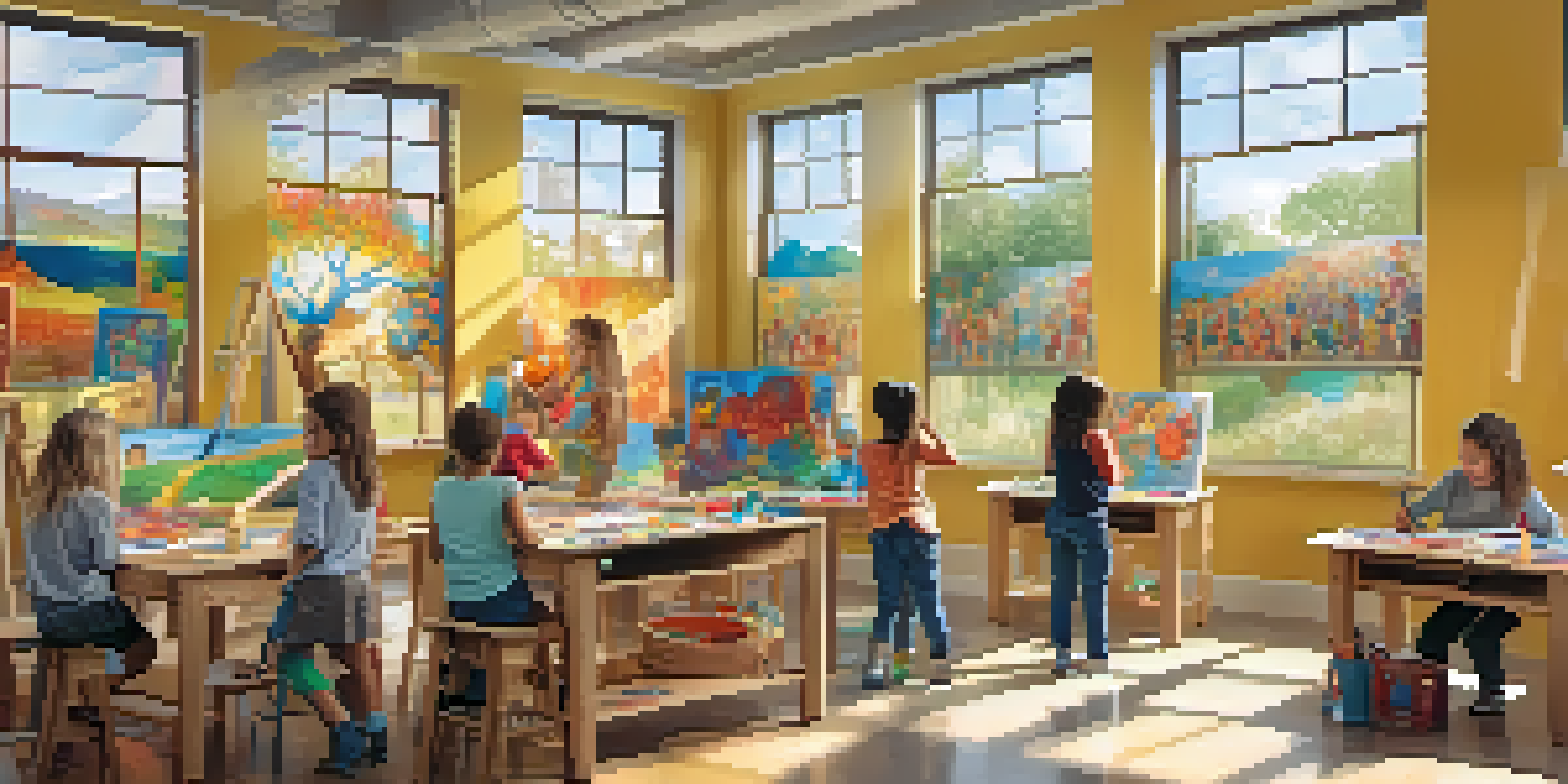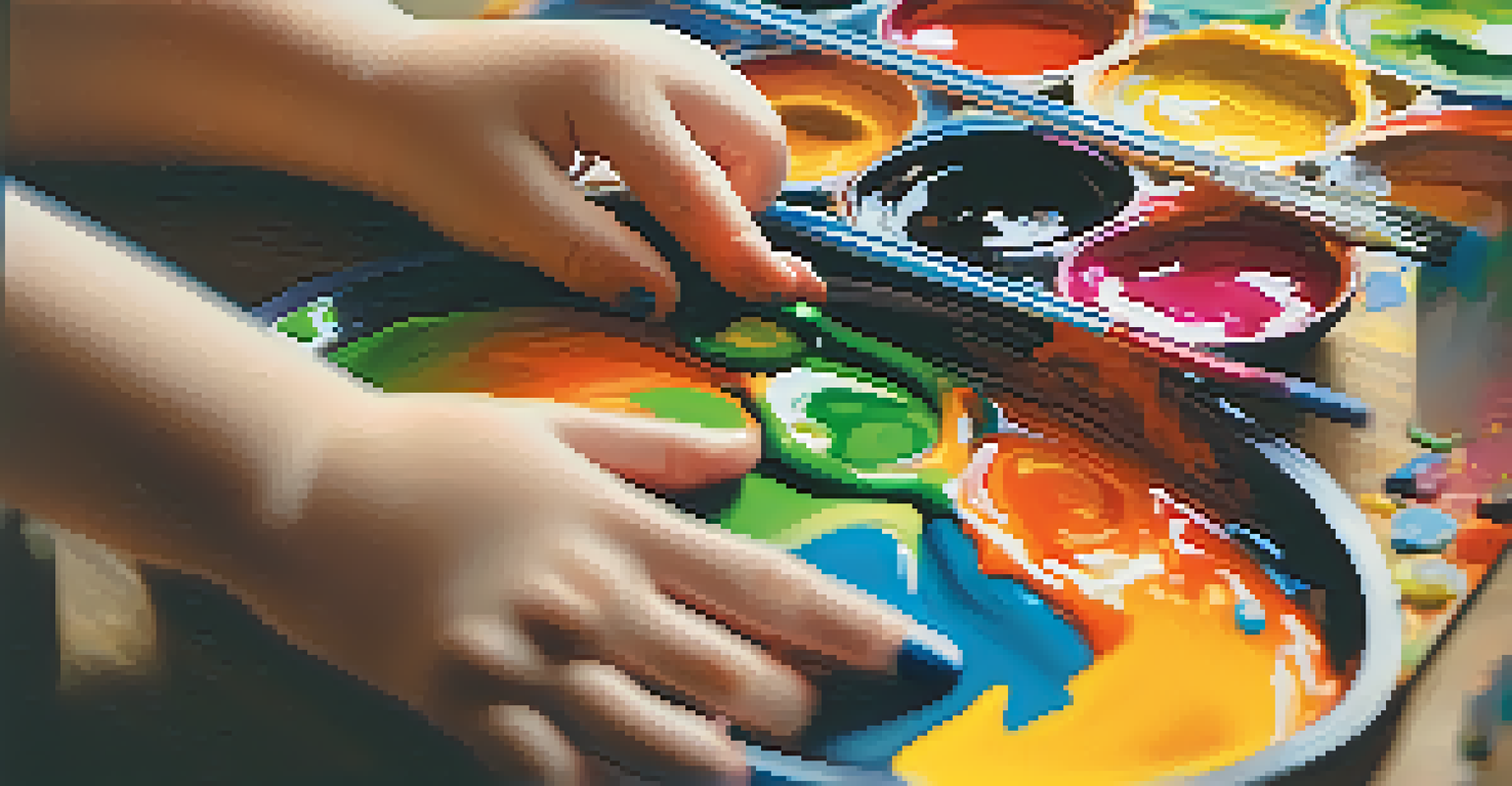The Importance of Free Expression in Children's Art Education

Understanding Free Expression in Art Education
Free expression in art education allows children to communicate their thoughts and feelings creatively. This process not only fosters their imagination but also builds confidence as they learn to share their unique perspectives. In a world that often tries to box them in, art becomes a canvas for their individuality.
Every artist was first an amateur.
When kids are given the freedom to express themselves, they develop critical thinking skills and emotional intelligence. They learn to interpret their feelings and experiences, translating them into visual forms. This exploration can lead to a deeper understanding of themselves and the world around them.
Moreover, free expression encourages collaboration and communication among peers. As children share their artworks, they engage in discussions that enhance their social skills and empathy. This collaboration can lead to friendships and a sense of community, which are crucial during their formative years.
Benefits of Creative Freedom in Art
Creative freedom in art allows children to explore various mediums and techniques, nurturing their artistic skills. When they can choose how to express themselves, they're more likely to take risks, experiment, and think outside the box. This exploration is essential for developing a personal style and creativity.

Additionally, allowing children the space to create without strict guidelines can lead to unexpected and innovative outcomes. For instance, a child might combine colors in a way that surprises even them, sparking a joy for discovery. Such moments can be incredibly rewarding and can instill a lifelong passion for art.
Empower Creativity in Education
Free expression in art education nurtures children's creativity, critical thinking, and emotional intelligence.
Furthermore, this freedom can improve mental well-being. Art serves as a therapeutic outlet, helping children process emotions and cope with stress. When they feel safe to express themselves, it can significantly enhance their overall emotional health.
Encouraging Individuality Through Art
Art education should celebrate individuality, allowing children to express their unique identities. This emphasis on personal expression helps kids understand that it's okay to be different and that their voices matter. It fosters a sense of pride in their creations, which can boost self-esteem.
Art is not what you see, but what you make others see.
For instance, when a child paints a picture that reflects their cultural background, it not only validates their experience but also educates others about diversity. Such opportunities for representation in art are vital for building an inclusive environment. It teaches children the value of their own stories and those of others.
By encouraging individuality in art, we prepare children to think critically about their identities as they grow. This understanding can lead to more compassionate, open-minded adults who appreciate and celebrate diversity in all its forms.
Navigating Criticism and Feedback in Art
In the realm of art education, learning to navigate criticism is a crucial skill. When children create freely, they will inevitably encounter feedback—both positive and negative. Teaching them how to receive criticism constructively can help them grow as artists and individuals.
For example, when a child's artwork is critiqued, it's essential to frame feedback in a way that encourages improvement rather than discouragement. This approach can help children view feedback as an opportunity for growth, rather than a personal attack. It teaches resilience and adaptability.
Celebrate Individuality in Art
Encouraging personal expression through art helps children embrace their unique identities and fosters self-esteem.
Moreover, discussing art can cultivate empathy, as children learn to appreciate differing viewpoints. They begin to understand that art is subjective, and their interpretation might differ from others. This realization can enhance their ability to engage in constructive dialogues, both in art and beyond.
The Role of Educators in Fostering Expression
Educators play a pivotal role in nurturing free expression in art education. By creating a supportive environment, teachers can encourage children to explore their creativity without fear of judgment. This safe space is crucial for cultivating confidence and enthusiasm for art.
For instance, teachers can provide various materials and resources, allowing children to experiment with different forms of expression. Encouraging open discussions about their work can also make a significant difference. When children feel heard and validated, they're more likely to express themselves freely.
Moreover, professional development for educators on the importance of free expression can enhance their teaching methods. By understanding how to facilitate creativity, teachers can better support their students in becoming confident and expressive artists.
Art as a Tool for Social Change
Art has long been a powerful medium for social change, and children’s art is no exception. When children express themselves freely through art, they can address societal issues and raise awareness about important topics. This not only empowers them but also encourages critical thinking about the world they inhabit.
For example, a child might create a mural expressing their views on environmental conservation. Such projects can inspire discussions not only among peers but also within the wider community. This kind of engagement can make children feel that their voices can contribute to larger conversations.
Art as a Medium for Change
Art empowers children to address societal issues, encouraging them to engage in critical discussions and social responsibility.
By fostering free expression in art, we equip children with the ability to advocate for themselves and others. As they grow, these skills can translate into a commitment to social responsibility and activism, making them informed and engaged citizens.
Integrating Free Expression Across the Curriculum
Integrating free expression in art across the broader curriculum can enhance learning in various subjects. Whether it’s through creative writing, music, or drama, allowing students to express themselves in different formats can deepen their understanding of the material. This holistic approach makes learning more engaging and enjoyable.
For instance, a history lesson could be complemented by a creative project where students depict historical events through art. This method helps them connect emotionally with the content, leading to a more impactful learning experience. It also reinforces the idea that creativity can coexist with academic rigor.

Furthermore, this integration encourages interdisciplinary thinking, preparing children for real-world challenges. By learning to merge creativity with analytical skills, they become versatile thinkers, ready to tackle problems from multiple angles.